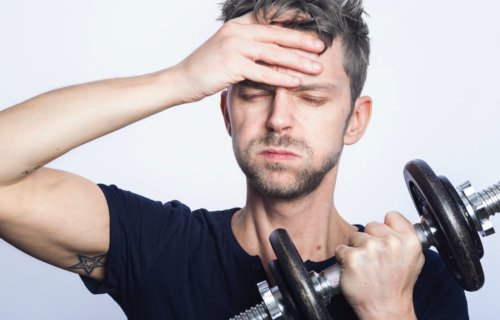ORLANDO, Fla. — Breaking a sweat and getting out of your comfort zone is usually key to a meaningful workout. However, should an exercise session feel like a test in pain tolerance? Unfortunately, a new national survey suggests many Americans are misinterpreting the old saying “no pain, no gain.”
Researchers from Orlando Health say close to one in five people (18%) say they often experience pain while exercising and the same percentage also habitually push through the pain rather than resting up to heal. The poll, put together by sports medicine physicians and orthopedic surgeons at the Orlando Health Jewett Orthopedic Institute, included 2,077 adults over 18 surveyed at the end of February 2022.
Simply put, researchers say pushing through sharp pain during workouts is not a healthy choice. The first step to truly feeling better is identifying the source of the pain. Moreover, plenty of recent medical advancements offer patients a variety of valid treatment options which avoid surgery. The study finds people attempt to ignore pain during workouts for a variety of reasons, but habitually doing so virtually guarantees worsening whatever condition is causing the pain in the first place.
“There’s the saying, ‘No pain, no gain.’ But there’s different types of pain that you feel during workouts, and sharp, stabbing pain that’s very uncomfortable is not typically normal,” explains George Eldayrie, MD, a sports medicine physician at Orlando Health Jewett Orthopedic Institute, in a media release. “The pain may be coming from an underlying problem and if you continue to push through it you can make that problem worse.”
There are easier ways of easing pain
One non-surgical option that many pain patients take advantage of is physical therapy, which stretches and strengthens various tendons and muscles. Injections of corticosteroids and platelet-rich plasma, intended to reduce inflammation and promote faster healing, are also available. Healthcare professionals usually find precisely where to deliver these injections using ultrasound technology.
“Rehabilitation is a powerful tool, but it’s important to see a professional who can really key in on the right diagnosis so a therapist can develop a treatment plan focused to the right area,” Dr. Eldayrie comments. “Platelet-rich plasma has also been shown to be very effective for chronic tendinopathies, things like tennis elbow or golfer’s elbow. But it typically works better the earlier it is administered, before the injury progresses.”
Jen Jordon, 39, lived with pain in her left knee for years before scheduling an appointment to see Dr. Eldayrie.
“I would go into a lunge and just feel a sharp pain and then it would just continuously hurt throughout the day,” Jordon explains. “It just kept getting a little bit worse and affecting me a little bit more during workouts and while I was on my feet at work, so I decided it was time to go get it checked out.”
Exercise is an integral part of Ms. Jordan’s life, and something she relies on to boost both mental and physical well-being, so she kept putting off surgery.
“Surgery is definitely a fear of mine. One of the reasons I work out is to stay healthy and prevent the need for surgery as I get older,” Jordon continues. “Part of me didn’t really want to know what was going on because I didn’t want to have to take time off or have a procedure that was going to take weeks or months of recovery.”

Technology is making surgery a less scary option
Dr. Eldayrie examined Jordan’s knee via x-rays and ultrasound, showing her in real time where her tendons were strained and where degradation was taking place.
“He was able to just point to the affected area and show me exactly what the issue was on his tablet. It was really informational and empowering to see the problem and learn how to take action to fix it,” Jordan says.
Ultimately, Jen was extremely happy to hear she doesn’t need surgery right now. Instead, she’ll focus on incorporating new exercises into her workout routines to better support the affected areas and relieve the knee pain.
“I am so glad that I went and had Dr. Eldayrie look at it, and I think it will help me prevent anything worse from happening in the future,” Jordon says. “After suffering for so many years and learning that simple stretching could have prevented the pain for all this time, I will definitely go in as soon as something starts hurting next time.”
While Ms. Jordan’s case had a happy, non-surgical ending, plenty of injuries do require surgery to properly heal. Researchers argue that surgery doesn’t have to be all that bad. Recent advancements in robotic and laparoscopic procedures have made many surgeries less evasive and easier to recover from than ever before.
